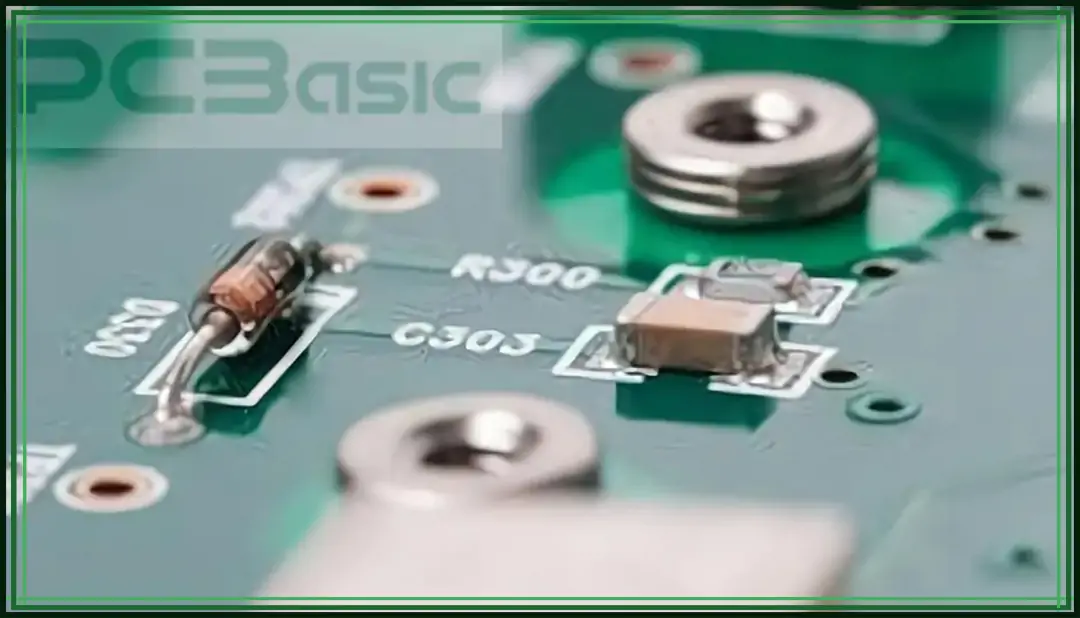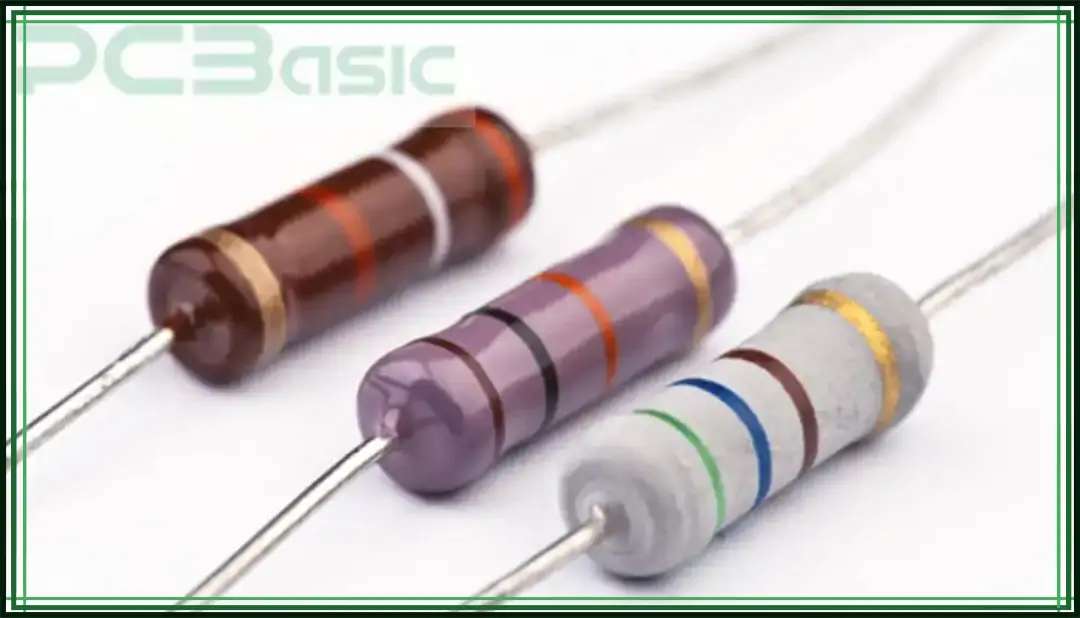

Global high-mix volume high-speed PCBA manufacturer
9:00 -18:00, Mon. - Fri. (GMT+8)
9:00 -12:00, Sat. (GMT+8)
(Except Chinese public holidays)


Global high-mix volume high-speed PCBA manufacturer
9:00 -18:00, Mon. - Fri. (GMT+8)
9:00 -12:00, Sat. (GMT+8)
(Except Chinese public holidays)
HomePage > Blog > Knowledge Base > What Are Through Holes On A PCB?|PCB Holes
In the process of circuit board design, the assembly method and technology of circuit board components have a great impact on the design. If THT is used to assemble the through-hole components, then the design of the through holes is involved accordingly. If SMD to mount, then the board design is different.
Therefore, when designing a printed circuit board (PCB), it is crucial to understand the different types of holes and their role in the assembly of electronic devices. In this article, we will discuss the through hole and its properties on the circuit board, compare the blind hole, which is often confused with the through hole, and compare the surface mount technology corresponding to the through hole technology.

A through hole is a hole that runs through the entire PCB. It is an important element in traditional and large-device PCB manufacturing. These holes can be plated (PTH, plated through hole) or non-plated (NPTH, non-plated through hole), and in some cases, through holes are also called vias.
Through holes are commonly used to install and connect through-hole components with leads or pins, including resistors, capacitors, connectors. The pins of these components are inserted into through holes and soldered to both sides of the board, creating a strong electrical connection. Because the pin of the component passes through the entire PCB and is fixed on both sides, the connection is usually stronger than the surface-mount component. In addition, the hole can handle greater current. Therefore, the through hole is often used in high-power electronic components and equipment with high mechanical strength requirements.
In PCBs, there are two main types of through-holes, each with a different purpose. PCB through holes are mainly divided into plated through holes and non-plated through holes.
Plated Through Hole, PTH
The inner wall of the through hole is metal-plated to form a conductive material. This allows current to flow between the different layers of the board. For example, in a multilayer PCB, the signal of the upper layer can be connected to the bottom layer through the plated hole, which is the key to achieving conduction between layers. This kind of hole not only plays the role of fixed components but also has the function of electrical connection, making it the most commonly used type of through hole in PCB design.
Non-Plated Through Hole, NPTH
The inner wall of this hole has no metal coating and is not conductive, so it will not be used for electrical connections. It’s usually used to mount screws, alignment pins, snaps, or other structural elements. Simply put, it only provides structural support and does not participate in circuit functions.
Understanding the difference between plated-through holes and non-plated-through holes is very important. It helps us ensure that the hole position, purpose, and function are set correctly when designing and assembling the circuit board, thus avoiding problems of poor soldering or abnormal function.
Because the through-hole components are easy to assemble and their connection joints are more solid, they are widely used in the assembly of the circuit board. According to their lead configurations, they can be divided into axial components and radial components, which are respectively applied to specific scenes.

The pins of the axial components are located at both ends of the component and extend along the central axis to form a linear arrangement. The pins of the axial components need to be bent at right angles, inserted into holes in the board, and installed on the board by soldering. This design is usually suitable for situations where equipment space is limited or a compact layout is required. There are many common axial components such as resistors, capacitors, diodes and so on.

Unlike axial components, radial components have pins on the same side and are usually arranged in parallel. The pins of the radial component face inward toward the board, and the component body is perpendicular to the board. Because of the parallel pin design, radial components are more suitable for automated assembly. This configuration is common in electrolytic capacitors and some types of resistors.
So what exactly is THT (Through-hole Technology)? In simple terms, through-hole technology means inserting the leads of electronic components into the through holes on the PCB board and then fixing them by soldering. This process is called through-hole soldering, which is usually done by wave soldering or hand soldering.
Although many electronic products now use smaller and more efficient surface mount technology, through-hole technology is still widely used in some areas where reliability is particularly high, such as aerospace, military equipment, industrial control systems, and so on. That's because through-hole soldering creates strong mechanical bonds, making the connections more durable and resistant to shock or vibration.

Through-hole assembly, the process of inserting components into through-holes and forming mechanical and electrical connections through soldering, often involves several steps.
Component insertion: Insert the pins of the through-hole components through the holes in the circuit board.
Soldering: After the components are inserted, their pins will be soldered to the copper pads on the opposite side of the PCB. Wave soldering is generally used for large batches of through-hole assembly, while manual soldering is used for small batches.
Inspection and testing: After soldering, the solder points of the components need to be checked to ensure the soldering quality. Common inspection methods include automated optical inspection (AOI) and X-ray inspection, which are used to detect soldering defects such as cold solder joints or insufficient solder.
Cleaning: Finally, the circuit board will be cleaned to remove flux residue or any contaminants left over during the soldering process, ensuring the cleanliness and reliability of the product.
In addition to through-hole assembly technology, surface mount technology (SMT) is also commonly used in circuit board assembly.
Unlike through-hole technology, surface-mount components are mounted directly on the surface of the PCB without holes. Surface-mount components typically have flat pins or pads that can be fixed directly to the PCB surface by soldering.
As two completely different assembly technologies, through-hole technology and surface mount technology differ in terms such as component placement, assembly process, cost and application suitability. Here’s a detailed comparison of through-hole vs surface mount technologies:
|
Feature |
Through-Hole Technology |
Surface Mount Technology |
|
Component Size |
Generally larger |
Smaller and compact |
|
Assembly Method |
Components are inserted into holes and soldered on both sides |
Components placed directly on the surface and soldered |
|
Mechanical Strength |
Stronger, better for heavy components |
Less mechanical strength, suitable for lighter components |
|
Cost |
More expensive, slower assembly |
Lower cost, faster assembly |
|
Design Complexity |
Suitable for less complex designs |
Supports high-density, complex designs |
|
Applications |
Used in high-reliability or high-power applications |
Common in consumer electronics, high-volume production |
During the board design, in addition to considering the use of through-hole or surface mount technologies, it is also very important to pay attention to the different types of holes used in PCBs. Blind holes are also common besides through holes.
A blind hole is a hole that does not extend completely through the PCB. Unlike through holes, blind holes are only drilled to a certain depth of the board and can connect the internal electrical layer without affecting the structure of the other side of the board, which is usually used for the connection of multilayer PCBs.
Here's a comprehensive comparison between blind holes vs through holes:
|
Comparison |
Blind Holes |
Through Holes |
|
Definition |
Goes partway through the PCB. |
Goes all the way through the PCB. |
|
Manufacturing |
Harder, needs precise control. |
Easier and quicker. |
|
Applications |
In multilayer and compact boards. |
For mounting components and vias. |
|
Strength |
Weaker, not through the whole board. |
Stronger, goes through the entire board. |
|
Space |
Takes less space. |
Takes up more space. |
|
Cost |
More expensive. |
Cheaper. |
|
Repair |
Harder. |
Easier. |
PCBasic offers reliable and professional through hole PCB assembly services tailored to meet a wide range of customer needs. Whether you require fully automated thru-hole soldering, high-reliability plated through hole (PTH) designs, or a hybrid assembly that combines both surface mount PCBs and through hole PCBs, its experienced team is here to support you at every step.
What makes PCBasic your ideal partner for through-hole assembly?
PCBasic is fully equipped for both through-hole technology (THT) and surface mount technology (SMT) production, ensuring smooth integration of different assembly processes.
Its engineers have extensive hands-on experience in handling complex through-hole PCB layouts, component placement, and through-hole soldering, delivering high-quality results for even the most demanding applications.
PCBasic also supports rapid prototyping and agile production runs, helping customers bring their designs to life quickly and efficiently without compromising quality.
Every board undergoes thorough inspection processes, including visual checks, AOI (Automated Optical Inspection), and functional testing to ensure reliable and consistent performance.
When you choose PCBasic, you're choosing a trusted partner who is committed to delivering excellence in through-hole PCB assembly—from design verification to final product delivery.

Comparing the different hole types in the PCBs, as well as the different assembly technologies, understanding their roles and advantages is crucial to successful PCB manufacturing.

Assembly Enquiry
Instant Quote
Phone contact

+86-755-27218592
In addition, we've prepared a Help Center. We recommend checking it before reaching out, as your question and its answer may already be clearly explained there.
Wechat Support

In addition, we've prepared a Help Center. We recommend checking it before reaching out, as your question and its answer may already be clearly explained there.
WhatsApp Support

In addition, we've prepared a Help Center. We recommend checking it before reaching out, as your question and its answer may already be clearly explained there.
